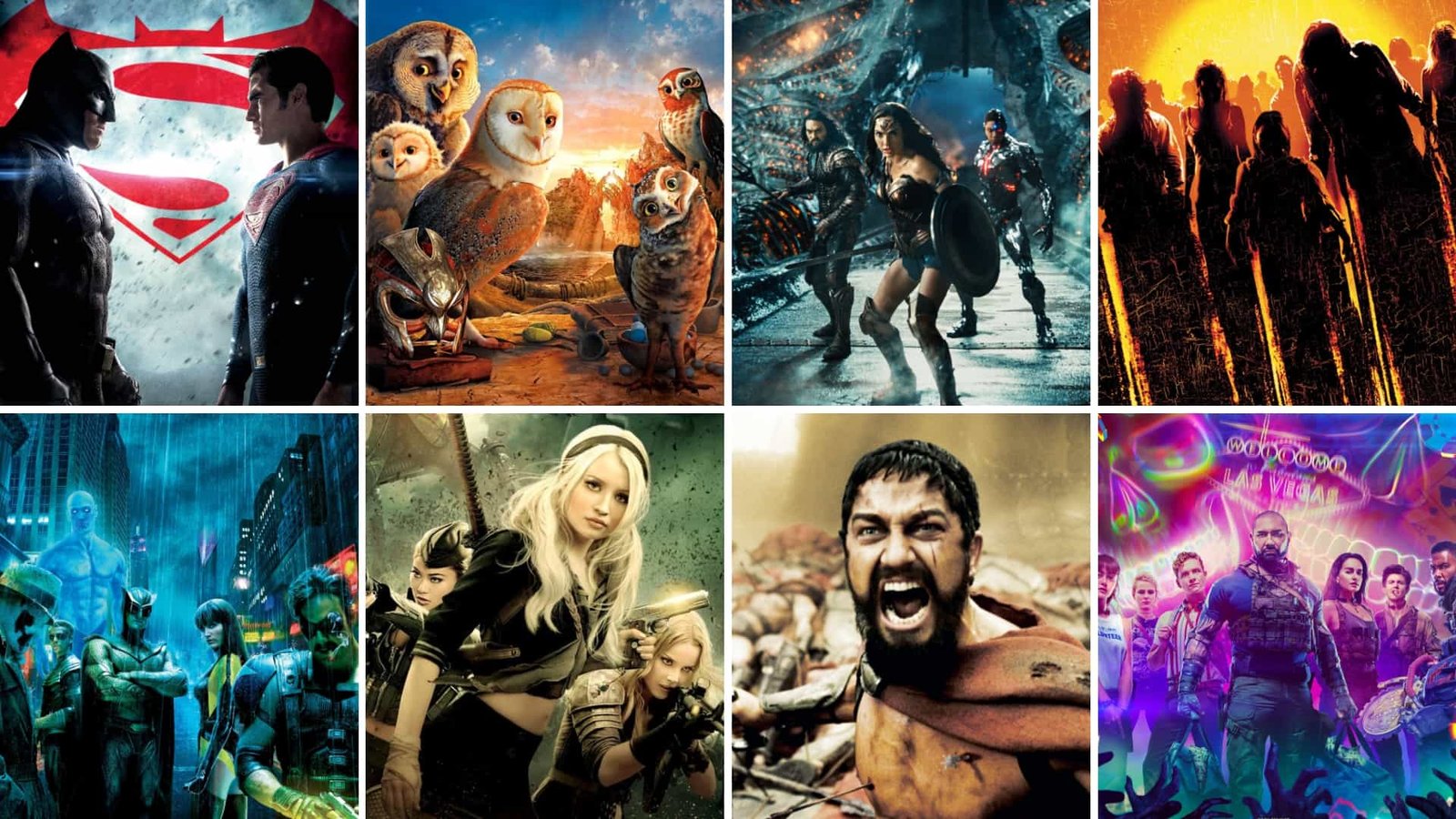When it comes to visually stunning, emotionally charged, and action-packed films, Zack Snyder movies have carved a unique space in modern cinema. Known for his signature slow-motion sequences, mythological themes, and stylized visuals, Snyder is a director whose work continues to polarize and inspire. From graphic novel adaptations to superhero epics, his filmography is a compelling exploration of dark storytelling and visual innovation.
Early Success: Dawn of the Dead (2004)
Zack Snyder made his feature film debut with Dawn of the Dead in 2004, a remake of George A. Romero’s classic zombie film. The movie was a commercial and critical success, showcasing Snyder’s flair for high-intensity action and stylish cinematography. It laid the groundwork for the themes and aesthetics that would become staples in Zack Snyder movies—apocalyptic overtones, moral ambiguity, and a heavy reliance on visual storytelling.
Visual Masterpiece: 300 (2006)
With 300, Snyder transformed a graphic novel by Frank Miller into a cultural phenomenon. Released in 2006, the film retells the story of King Leonidas and his 300 Spartans fighting against the Persian army. The movie was a landmark in terms of visual effects, using green screens to replicate the illustrated feel of the comic book. 300 became one of the most visually iconic Zack Snyder movies, often imitated but never duplicated. Its success also solidified Snyder’s reputation as a bold, visionary filmmaker.
Comic Book Lore: Watchmen (2009)
Next came Watchmen (2009), Snyder’s ambitious adaptation of Alan Moore and Dave Gibbons’ groundbreaking graphic novel. Dark, philosophical, and deeply political, Watchmen was a challenging narrative to bring to screen. Though it received mixed reviews upon release, the film has since gained a cult following. The director’s cut and ultimate cut of the film are often hailed as superior versions, revealing the depth and complexity Snyder aimed to capture. Among Zack Snyder movies, Watchmen stands out for its thought-provoking take on superhero morality.
Superman Reimagined: Man of Steel (2013)
In 2013, Snyder took on one of the most iconic superheroes of all time with Man of Steel. Starring Henry Cavill as Superman, the film rebooted the character with a darker, more introspective tone. While traditionalists criticized its deviation from the light-hearted portrayal of Superman, others praised its fresh, emotionally grounded take. The film’s success laid the foundation for what would become the Snyder-led DC Extended Universe (DCEU), marking a significant chapter in the evolution of Zack Snyder movies.
Expanding the DCEU: Batman v Superman: Dawn of Justice (2016)
Continuing his vision for the DCEU, Snyder directed Batman v Superman: Dawn of Justice in 2016. The film brought together two of the most iconic superheroes in history for an epic showdown. Though critics were divided over its tone and pacing, the film offered unforgettable imagery and philosophical themes, including the burden of power, justice, and fear. It also introduced Wonder Woman, played by Gal Gadot, paving the way for her standalone films. Despite the controversy, it remains one of the most discussed Zack Snyder movies.
The Controversial Epic: Justice League (2017) and Zack Snyder’s Justice League (2021)
Snyder began work on Justice League, but due to a personal tragedy, he stepped away from the project, and Joss Whedon completed the theatrical version, which was released in 2017. The result was widely criticized for its inconsistent tone and lack of coherence.
However, in 2021, Snyder released his original vision as Zack Snyder’s Justice League, a four-hour-long epic that won widespread acclaim from fans. Richer in character development and storytelling, it restored Snyder’s vision for the DCEU and proved the power of fan movements in the modern entertainment era. This version is now considered one of the defining Zack Snyder movies, especially for its redemption arc and cinematic scale.
A Return to Zombies: Army of the Dead (2021)
Snyder returned to his zombie roots with Army of the Dead, released on Netflix in 2021. The film blended heist elements with a post-apocalyptic setting, featuring a diverse cast and elaborate action sequences. It marked the beginning of a new cinematic universe on the streaming platform, proving that Zack Snyder movies can thrive outside of the traditional Hollywood system.Vision Beyond the Screen: Snyder’s Unique Style

One of the defining aspects of Zack Snyder movies is his unparalleled visual style. Often using slow-motion, high-contrast lighting, and detailed CGI, his films are more than stories—they’re visual experiences. His approach to storytelling leans heavily on mythological and existential themes, often dividing critics and fans alike. But whether you love or dislike his work, Snyder’s influence on modern cinema is undeniable.
Looking Ahead: Rebel Moon and More
Snyder’s most recent work, Rebel Moon, launched on Netflix in two parts between 2023 and 2024. Inspired by Star Wars, Akira Kurosawa’s films, and classic sci-fi, it showcases his continued desire to build original, large-scale cinematic worlds. The franchise is poised to expand, with sequels and spinoffs planned, further demonstrating the enduring appeal of Zack Snyder movies.
Conclusion
Love him or criticize him, Zack Snyder is a filmmaker with a distinct voice and a devoted following. His works challenge traditional norms of storytelling and visual design, often embracing darker tones and complex characters. From 300 to Justice League, and from Watchmen to Rebel Moon, Zack Snyder movies remain a testament to a director who isn’t afraid to dream big, take risks, and stay true to his vision. Whether in theaters or on streaming platforms, his cinematic journey is far from over.

